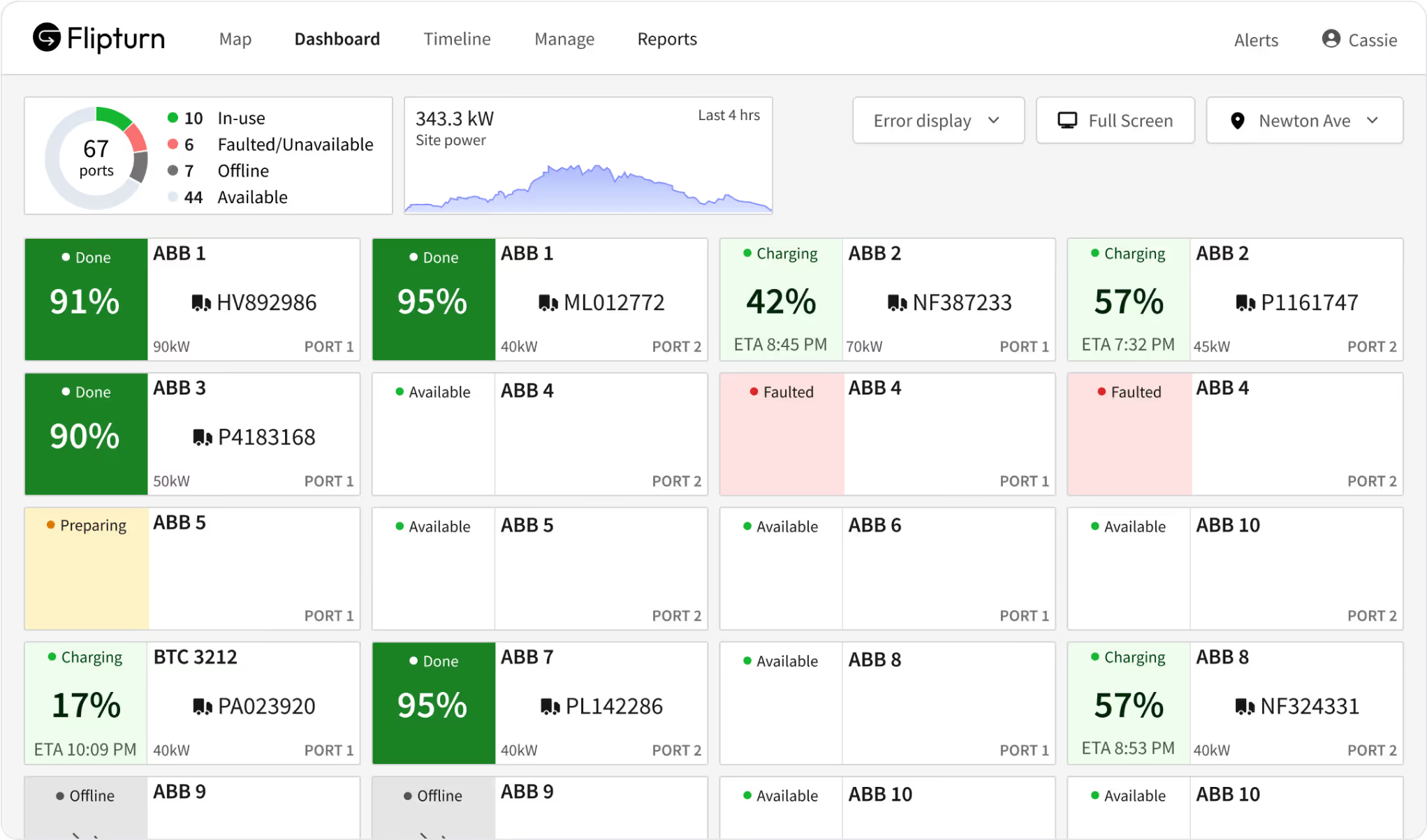What is charger management?
Series: Understanding fleet charger management
Charger management is a cornerstone of fleet electrification, focusing on the oversight and optimization of electric vehicle (EV) charging infrastructure. It ensures chargers are available, functional, and efficiently managed, thereby minimizing downtime and maximizing productivity.

What is charger management?
A key challenge for fleets is balancing charger availability and scheduling across different vehicle types to prevent conflicts and downtime. Additionally, fleets must scale their infrastructure to accommodate growth, manage energy demand to avoid grid overloads, and integrate charger management systems with their existing fleet management software.
Charger management involves strategies and systems to oversee EV charging. This includes real-time monitoring of charger status, automated scheduling to optimize charging times, and proactive maintenance to keep chargers operational.
For light-duty, medium-duty, and heavy-duty fleets, effective charger management maximizes uptime, reduces costs, maintains battery health, and ensures operational reliability. It ensures EVs are charged and ready for use, crucial for meeting service commitments.
The importance of charger management for fleet electrification
As fleets transition to electric vehicles, charger management becomes crucial for several reasons:
- Operational efficiency: Proper charger management ensures vehicles are charged and ready when needed, reducing idle time and maintaining fleet operations.
- Cost savings: Optimizing charging schedules to avoid peak demand periods and leveraging off-peak rates significantly reduces electricity costs.
- Reliability: Regular maintenance and proactive monitoring prevent unexpected charger failures, ensuring consistent vehicle availability.
- Environmental impact: Efficient charging reduces energy waste and supports emission reduction goals, contributing to a fleet's sustainability efforts.
Effective charger management leads to cost savings, enhanced reliability, and improved fleet performance. By adopting the right strategies and technologies, fleets can ensure their EVs are always road-ready. Understanding the intricacies of charger management and addressing associated challenges allows fleets to fully benefit from electrification, including increased efficiency, reduced costs, and enhanced reliability.
The impact of poor charger management
Without effective charger management, fleets can face significant challenges that disrupt operations and incur high costs. Here are some real-world scenarios:
- Uncharged vehicles: A driver arrives at the depot in the morning to find that their vehicle isn't charged, leading to delays and missed service commitments.
- High demand charges: When 10 vehicles return to the depot at the same time and start charging simultaneously, the sudden spike in electricity demand can result in thousands of dollars in demand charges.
- Charger downtime: A charger that has not been maintained properly fails, leading to a queue of vehicles waiting to charge and causing significant operational delays.
- Inefficient energy use: Charging multiple vehicles simultaneously during peak hours without optimization leads to unnecessarily high electricity costs and strain on the local grid.
- Battery health degradation: Poorly managed charging schedules that do not consider optimal charging rates can lead to faster degradation of vehicle batteries, reducing their lifespan and increasing replacement costs.
- Software integration issues: Lack of integration between charger management systems and fleet management software can result in missed charging opportunities, inefficient use of chargers, and incomplete data for operational decisions.
All of these are real examples we've heard from our customers, highlighting the critical need for efficient charger management.
In upcoming posts, we'll delve deeper into various aspects of charger management, exploring its benefits, key features of management software, common misconceptions, best practices, and future trends. Stay tuned to learn more about optimizing your fleet's charging infrastructure and driving towards a greener future.







